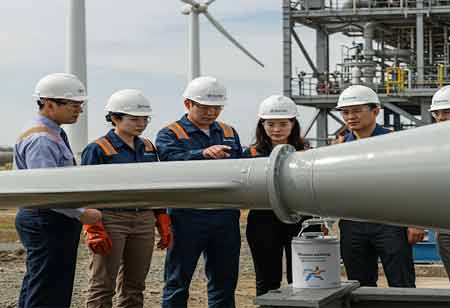Thank you for Subscribing to Construction Business Review Weekly Brief
Specials
- Apartment and Condominium Contractors Canada
- Decking Canada
- Architectural Glass Europe
- MEP APAC
- Construction Saudi Arabia
- German Apartment and Condominium Contractors
- Construction Law APAC
- Outdoor Construction
- Foundation Construction Canada
- MEP Canada
- Kitchen and Bath
- Cold Storage Construction APAC
- Precast Concrete Europe
- Construction Staffing Europe
- Pre-Construction Services
- Flooring System APAC
- Scaffolding Canada
- Swimming Pool Construction Canada
- Construction Management Canada
- Cold Storage Construction Canada
- Flooring Systems Europe
- Residential Construction
- Concrete Canada
- Construction Cladding Europe
- Construction Cladding APAC
- Concretes, Aggregates and Construction Materials APAC
- Concretes, Aggregates and Construction Materials Europe
- Commercial Contractors Europe
- Commercial Contractors APAC
- Dummy
- Construction Insulation, Coating and Waterproofing
- Construction Management APAC
- Landscaping Canada
- Construction Coating Europe
- Construction Tech Startups Europe
- Insulation Services Europe
- Mechanical Contractor Canada
- Mould Remediation and Testing Europe
- Swimming Pool Construction APAC
- Building Sealing Solutions Europe
- Construction Engineering Services
- Mechanical Electrical and Plumbing
- Roofing Systems Europe
- Architectural Glass APAC
- Startups APAC
- Construction Forensic and Owners Representative
- Flooring System
- Waterproofing APAC
- Wall Systems
- Safety and Compliance Europe
- Construction Equipment
- Modular and Prefab Construction
- Architectural Glass
- Construction MENA
- Construction Demolition and Recycling Europe
- Modular Construction Europe
- Construction Interiors
- Steel Building APAC
- HVAC
- Doors and windows
- Modular Construction APAC
- Building Information Modeling APAC
- Sustainable Construction APAC
- Building Restoration and Maintenance
- Commercial Contractors
- Specialty Construction
- Construction Engineering Canada
- Construction Engineering MENA
- Modular Construction Canada
- Construction Demolition Canada
- Roofing and Siding Systems
- Construction Latam
- Construction Staffing
- Roofing Systems APAC
- Construction Consulting
- Steel Building Europe
- Construction Demolition and Recycling APAC
- Safety and Compliance APAC
- Concretes, Aggregates and Construction Materials
- Construction Cladding
The Use of IoT Technology in Tunnel Construction Monitoring
Low-power, wireless hardware systems offer a high level of durability and adaptability, making them an excellent choice because they require less maintenance and can be modified to specific environmental conditions.

By
Construction Business Review | Thursday, June 03, 2021
Stay ahead of the industry with exclusive feature stories on the top companies, expert insights and the latest news delivered straight to your inbox. Subscribe today.
Low-power, wireless hardware systems offer a high level of durability and adaptability, making them an excellent choice because they require less maintenance and can be modified to specific environmental conditions.
FREMONT, CA: Tunneling is one of the most dangerous geotechnical construction operations. To reduce risk to a minimum, it's critical to be able to monitor the stability of surrounding structures and underground excavations in real-time. Operators who rely on manual readings are working with outdated data and making somewhat blind decisions as a result. This represents a significant danger since prospective events are challenging to detect. Despite significant developments in instrumentation and monitoring, accidents involving workers and the general public during tunnel building projects continue to pose a considerable risk. With modern Internet of Things (IoT) technology, the level of risk can be significantly lowered.
A wireless monitoring device is one option for replacing manual readings. While the term "wireless" isn't new, working with a system based on IoT technology is. IoT monitoring relies on low-power wide-area (LPWA) networks rather than 3G or Wi-Fi, which improves data accuracy and dependability. Sensors used in construction projects, such as multi-point borehole extensometers, can be connected to wireless data nodes, which broadcast sensor data via gateways to on-site servers using IoT wireless monitoring systems. Operators can track operations in real-time as a result of this.





